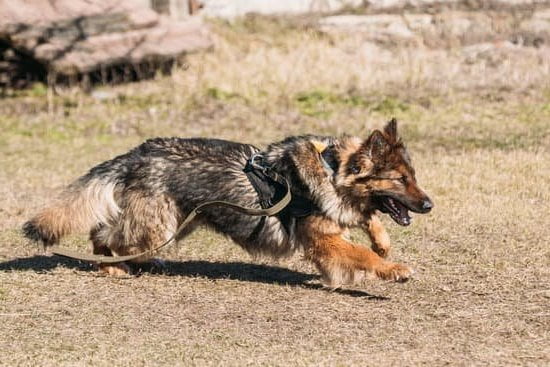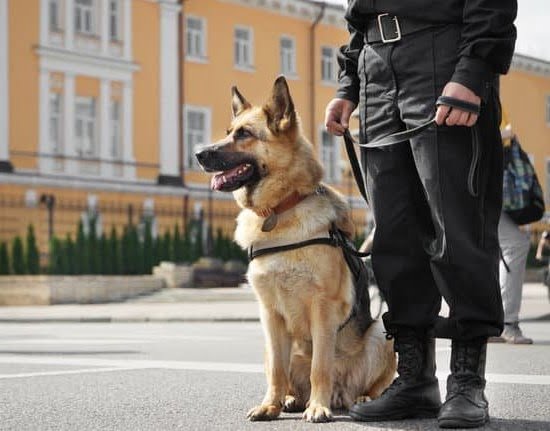Service dogs play a crucial role in assisting individuals with disabilities, providing them with greater independence and support. The process of training service dogs is extensive and requires careful selection, specialized training techniques, and understanding of the legal rights and responsibilities of service dog handlers. This article will explore the various aspects of training service dogs, from selecting suitable candidates to advanced training techniques, as well as the impact of service dogs on their handlers’ lives.
The importance of service dogs cannot be overstated, as they provide invaluable assistance to people with disabilities, offering not only physical support but also emotional comfort and companionship. Selecting the right candidate for service dog training is a vital step in ensuring that these animals can effectively carry out their duties. Training service dogs involves basic obedience and behavior modification techniques, followed by more advanced training methods to prepare them for their specific roles.
Throughout this article, we will delve into the challenges and rewards of training service dogs, as well as the impact they have on the lives of their handlers. Additionally, we will explore the legal rights and responsibilities of service dog handlers, shedding light on the importance of understanding these laws for both handlers and the general public.
Finally, we will take a look at future innovations in service dog training and how these developments may shape the field in years to come.
The Process of Selecting a Suitable Candidate for Service Dog Training
Service dog training begins with the crucial process of selecting suitable candidates for training. Not all dogs are cut out for the demanding role of a service dog, so it is essential to carefully evaluate potential candidates before investing time and resources into their training. The selection process involves assessing a dog’s temperament, health, and physical abilities to ensure they have the necessary qualities to become successful service dogs.
When selecting candidates for service dog training, it is important to consider traits such as intelligence, trainability, socialization, and confidence. An ideal service dog candidate should be quick to learn new tasks, calm under pressure, friendly and sociable with people and other animals, and physically fit to handle the demands of their future work.
Additionally, it is crucial to assess a dog’s overall health to ensure they will be capable of fulfilling their duties as a service dog for an extended period of time.
Once suitable candidates have been identified, they can begin the next stage of their journey towards becoming trained service dogs. This initial selection process plays a significant role in determining the success and effectiveness of service dogs in fulfilling their vital roles in assisting individuals with disabilities or specific needs. Through careful consideration and thorough evaluation, only the most suitable candidates are chosen for training service dogs.
Training Service Dogs
Training a service dog begins with basic obedience and behavior modification. This initial phase of training lays the foundation for the dog to perform tasks that will assist individuals with disabilities or special needs. Service dogs must undergo rigorous training to ensure they are able to carry out their specific duties effectively and reliably.
The Importance of Basic Obedience Training
Basic obedience training is crucial for service dogs as it teaches them fundamental commands such as sit, stay, come, and heel. These commands are essential for a service dog to be well-behaved and under control in any situation, especially in public settings. Additionally, basic obedience training helps service dogs develop impulse control and focus, which are vital traits for their role as assistance animals.
Behavior Modification Techniques
In addition to basic obedience training, behavior modification techniques are also an integral part of training service dogs. This involves addressing any behavioral issues or challenges the dog may have, such as fearfulness, aggression, or overexcitement. By utilizing positive reinforcement and desensitization methods, trainers can help service dogs overcome these obstacles and develop more appropriate behaviors.
Specialized Training for Assistance Tasks
Once a service dog has mastered basic obedience and behavior modification, they move on to specialized training for specific assistance tasks tailored to the individual’s needs. This may include tasks such as retrieving objects, opening doors, providing stability for individuals with mobility limitations, alerting to medical episodes, or guiding visually impaired individuals safely through their environment. This advanced training builds on the foundation of basic obedience and behavior modification to enable the service dog to fulfill their role effectively.
Advanced Training Techniques for Service Dogs
Service dogs go through rigorous training to ensure that they are able to perform their duties effectively. Once they have mastered basic obedience and behavior modification, the advanced training techniques come into play. Here are some of the advanced training techniques used for service dogs:
1. Scent Detection: Many service dogs are trained to detect specific scents such as drugs, explosives, or even medical conditions like low blood sugar in diabetics. This type of training requires a keen sense of smell and the ability to alert their handler when a particular scent is detected.
2. Public Access Training: Service dogs need to be well-behaved and confident in various environments such as restaurants, shopping malls, and public transportation. They undergo extensive public access training to ensure that they can remain focused on their handler’s needs despite distractions and unfamiliar surroundings.
3. Task-Specific Training: Depending on the needs of their handlers, service dogs may require task-specific training such as turning on lights, retrieving items, or providing physical support for individuals with mobility issues.
These advanced training techniques not only enhance the abilities of service dogs but also allow them to support their handlers in more complex and diverse situations.
The next phase of service dog training involves extensive socialization efforts and continued reinforcement of learned behaviors. This ensures that the service dog is able to confidently perform its duties without any hesitation or fear while providing assistance to its handler in various real-life scenarios.
The Role of Positive Reinforcement in Service Dog Training
Positive reinforcement is an essential component of training service dogs and plays a significant role in shaping their behavior and actions. By using positive reinforcement, trainers can effectively communicate with the dogs, create a strong bond, and motivate them to exhibit desired behaviors. This section will delve into the importance of positive reinforcement in service dog training and highlight its impact on the overall success of the training process.
Understanding Positive Reinforcement
Positive reinforcement involves rewarding a service dog for displaying a specific behavior, which increases the likelihood of the behavior being repeated in the future. This method focuses on using rewards such as treats, toys, or verbal praise to encourage and reinforce desirable behaviors. Through consistent positive reinforcement, service dogs learn to associate certain actions with pleasant outcomes, ultimately leading to improved obedience and performance.
The Benefits of Positive Reinforcement
Using positive reinforcement in service dog training helps create a supportive and encouraging learning environment. It fosters a sense of trust and cooperation between the dog and trainer, leading to better communication and understanding. Additionally, it enables the dogs to develop confidence, reduce anxiety, and build a positive association with their tasks. This approach not only enhances their ability to perform specific tasks but also promotes mental well-being.
Implementing Positive Reinforcement Effectively
To effectively utilize positive reinforcement in training service dogs, consistency is key. Trainers must consistently reward desired behaviors while ignoring or redirecting undesired ones. It’s important for trainers to identify what motivates each individual dog and tailor their rewards accordingly. By implementing positive reinforcement effectively, service dogs can be trained to assist individuals with disabilities more successfully and make a meaningful impact on their lives.
The Challenges and Rewards of Training Service Dogs
Training service dogs comes with its own set of challenges, but also brings tremendous rewards for both the dogs and their handlers. One of the primary challenges in training service dogs is the time and effort it takes to properly train them. Whether it’s basic obedience or more advanced techniques, training a service dog requires patience, consistency, and a significant time commitment from the trainers.
Another challenge in training service dogs is ensuring that they are socialized and exposed to various environments and situations. This helps them adapt to different real-life scenarios that they may encounter when assisting their handlers. Additionally, service dog trainers must also carefully select suitable candidates for training, as not all dogs have the temperament or personality traits required for this type of work.
Despite these challenges, the rewards of training service dogs are immeasurable. Seeing a service dog successfully perform tasks that make a difference in someone’s life is incredibly fulfilling for trainers. The bond formed between a service dog and its handler through the training process is also highly rewarding. Service dogs provide companionship, independence, and assistance to individuals with disabilities, making a profound impact on their quality of life.
Overall, while training service dogs can be demanding and requires dedication, the positive impact they have on their handlers’ lives makes it all worthwhile.
| Challenges | Rewards |
|---|---|
| Time commitment | Fulfillment from seeing the dog making a difference |
| Socialization and exposure | Bond formed between dog and handler |
| Selecting suitable candidates | Impact on handlers’ quality of life |
The Impact of Service Dogs on Their Handlers’ Lives
Service dogs have a profound impact on the lives of their handlers, providing not only physical assistance but also emotional support and companionship. These specially trained dogs are able to enhance the independence and quality of life for individuals with disabilities. Research has shown that service dogs can help reduce stress, anxiety, and depression in their handlers, as well as increase social interaction and overall well-being.
One of the most significant impacts that service dogs have on their handlers is the sense of freedom and empowerment they provide. For individuals with mobility issues, service dogs can assist with tasks such as opening doors, retrieving objects, and even helping with balance while walking. This increased independence allows handlers to live more fulfilling lives and participate in activities that they may have previously found challenging or impossible.
In addition to the physical assistance they provide, service dogs also offer emotional support to their handlers. Many individuals with disabilities face social isolation and feelings of loneliness, but the presence of a loyal service dog can greatly improve their mental and emotional well-being. The constant companionship and unwavering loyalty of a service dog can help alleviate feelings of depression and anxiety, leading to an improved overall quality of life.
| Impact Category | Benefits |
|---|---|
| Physical Assistance | Ability to open doors, retrieve objects, assist with balance |
| Emotional Support | Reduced stress, anxiety, depression. Increased social interaction. |
The Legal Rights and Responsibilities of Service Dog Handlers
Service dogs play a vital role in the lives of individuals with disabilities, offering support and assistance in various tasks. Once a service dog has completed its training, it is important for both the handler and the general public to understand the legal rights and responsibilities that come with having a service dog. Here are some key points to consider:
1. Access Rights: Under the Americans with Disabilities Act (ADA), service dogs are allowed access to public places, including restaurants, hotels, stores, and public transportation. This means that service dog handlers have the right to be accompanied by their trained canine companion in these locations.
2. Public Etiquette: While service dogs have access rights, handlers also have the responsibility to ensure that their dog behaves appropriately in public settings. This includes keeping the dog under control, ensuring cleanliness, and preventing any disruptive behavior.
3. Identification: Service dog handlers are not required by law to carry identification for their dog, nor are they obligated to disclose their disability or provide proof of their service animal’s training. However, there are specific guidelines on how a service dog should behave in public; thus it is important for owners of service dogs to understand these guidelines.
4. Healthcare Facilities: In healthcare facilities such as hospitals and clinics, service dogs may be permitted access but may be excluded from certain areas for health or safety reasons. It is important for handlers to communicate with facility staff about their needs and work together to find appropriate solutions.
Understanding these legal rights and responsibilities is essential for both service dog handlers and members of the public in order to ensure a respectful and effective partnership between the handler and their trained service dog.
The Future of Service Dog Training
In conclusion, the future of training service dogs is filled with exciting innovations and developments that aim to improve the lives of both the dogs and their handlers. With advancements in technology and a better understanding of animal behavior, the training methods for service dogs are constantly evolving to ensure that they are equipped to provide the best possible assistance to their handlers.
One notable development in the future of service dog training is the use of virtual reality and simulation techniques to expose dogs to a wide range of environments and scenarios. This innovative approach allows service dogs in training to become more adaptable and confident in real-world situations, ultimately enhancing their ability to assist their handlers effectively.
Furthermore, ongoing research and collaboration between trainers, veterinarians, and animal behavior specialists continue to refine the training techniques used for service dogs. The incorporation of evidence-based practices and a deeper understanding of canine cognition promise to yield even more successful outcomes in producing highly skilled and reliable service dogs.
As we look ahead, it is clear that the future holds great promise for improving the quality of training for service dogs. Through ongoing dedication, innovation, and a commitment to excellence, these remarkable animals will continue to make a profound impact on the lives of individuals with disabilities. The future is bright for service dog training, with advancements poised to enhance the bond between these incredible animals and their handlers.
Frequently Asked Questions
How Do I Teach My Dog to Be a Service Dog?
Teaching your dog to be a service dog requires thorough training and socialization. Start by teaching basic obedience commands such as sit, stay, and come. Then, work on advanced skills like retrieving items, opening doors, or guiding you through crowds.
How Many Commands Must a Dog Learn to Be a Service Dog?
A service dog needs to learn a wide range of commands for various tasks related to their handler’s specific needs. Common commands include “sit,” “stay,” “heel,” “retrieve,” “alert,” “brace,” and many more. The number of commands can vary depending on the specific tasks the dog is trained to perform.
How Do You Train a Service Dog for Depression and Anxiety?
Training a service dog for depression and anxiety involves teaching them tasks that can help their handler during times of distress. These tasks may include providing deep pressure therapy, interrupting harmful behavior like self-harm, fetching medication or bringing help in case of emergencies. Consistent practice and positive reinforcement are essential in this kind of training.

Welcome to the blog! I am a professional dog trainer and have been working with dogs for many years. In this blog, I will be discussing various topics related to dog training, including tips, tricks, and advice. I hope you find this information helpful and informative. Thanks for reading!





